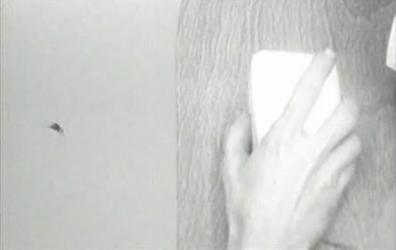At a conference in California in December 1968, a group from Stanford University demonstrated how texts can be moved from place to place with the help of a mouse, and remote users can also share writing - a combination of Word, the Internet and the first demonstration of using a mouse * The developers graduated and went to work at Xerox and the sequel is known

We recently heard that the world famous mouse, Walt Disney's Mickey Mouse is celebrating his eightieth birthday since he first appeared in a black and white cartoon. But an equally famous mouse turns forty this month: the computer mouse. On December 1968, XNUMX, high-tech man Douglas Engelbart first used a mouse to demonstrate new ways of working with computers.
The first mouse that Engelbart used in a demonstration at the fall conference of the computing industry in California was made of wood and had one button. It was this demonstration that inspired hardware and software manufacturers to make it a widely used tool. Last week, all the industry veterans who were associated with the first mouse demonstration gathered in California to mark the 40th anniversary of that demonstration.
"It was a beautiful demonstration, but there was also truth behind it," said Dr. Jeff Rollifson, in an interview with the BBC website. Rolfison currently serves as the director of Sun's VLSI research group, but in 1968 he was the architect and chief programmer of the software that demonstrated the operation of the mouse at a convention 40 years ago.
Rob Skitmore from the Science Museum in London estimates that the mouse will remain a dominant force despite new technologies such as the touch screen.
The mouse, built by Bill English, helped Dr. Engelbart demonstrate how to paste, copy, and move pieces of text as well as show ways to use computer networks to collaborate and edit the same document. Dr. Rollifson joined the group that Engelbart formed at the Stanford Research Institute in California after meeting the charismatic engineer, at a previous convention, in 1965. "I met Doug and was captivated by his charms. I understood exactly what he wanted to do and I got carried away with his ideas."
Engelbart wanted computers to work to augment human intelligence and allow people to work in a much more efficient way than they did at the time without these tools. In a 1968 demonstration, Engelbart's team showed a computer system called NLS, developed to give ideas practical form. Most of the components of the system, the SRI (Stanford Research Laboratory) team had to invent.
"There were pieces of components, but no unique set of ideas, but we thought about them together." Although the mouse was only one of the components in the demo, people were enthusiastic about it. "The idea in general was to take a text and give it flexibility. We had hyperlinks and the ability to edit, as is common today" said Dr. Rollifson. The demonstration was so advanced relative to the computing of that time, like holding lightning bolts in your hands, Rolifson cites.
Engelbart's software was the first to be distributed on the newly built Arpanet network (later the Internet). - NLS is also mentioned in the first RFC - the technological document that describes the work in what we now call the Internet. In fact SRI from Stanford and UCLA were the first two research institutions to connect to the network that later became the Internet. The problem with the NLS computer is that it was intended for skilled people and had 500 one-key commands.
However, the idea of the mouse was not abandoned, and many of the people who worked with Engelbart at SRI moved to Xerox, another legendary laboratory in California responsible for many of the technologies that led to the personal computer revolution and the WWW.

One response
The person who starts a very simple startup of transferring the mouse to a finger device will make a lot of money (for example three wireless devices that are worn on the thumb and ring finger when the device is equipped with a laser for movement and the two on the sides with the left and right buttons). Whoever makes a fortune is asked to reward me with a free device 🙂
Greetings friends,
Ami Bachar